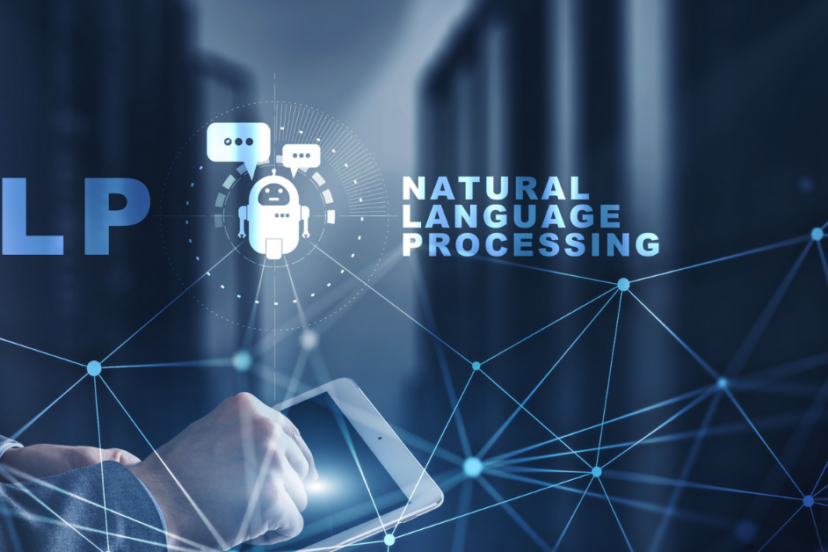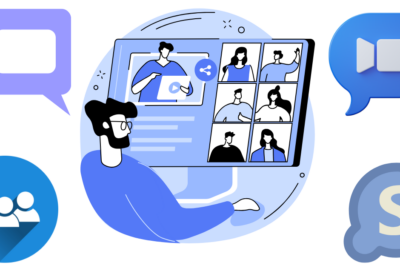Natural Language Processing (NLP): Empowering Human-Computer Communication
Imagine a world where your computer is as perceptive as your closest buddy. A future where it understands not just what you type but also the meaning behind those words, how they are used, and how they make you feel. Isn’t it fascinating? Natural Language Processing (NLP) is a revolutionary technology that is altering how people connect with computers.
NLP isn’t limited to just words and grammar. It’s all about making sense of untrained speech. The tone, intent, and even the slanginess of a phrase are all assessed. Every sector, from healthcare to e-commerce, is experiencing a revolution because of NLP’s more “human-like” capabilities.
The fundamentals, practical applications, and revolutionary impact of NLP on human-machine dialogue will all be discussed in this blog post. Both techies and people in the business industry will benefit from this guide. Let’s get started understanding machine speech!
What is Natural Language Processing?
The study of how computers and humans communicate using language is Natural Language Processing (NLP). It draws on computer science, artificial intelligence, and linguistics. The ultimate goal is for computers to be able to comprehend, evaluate, and produce usable human language. NLP makes human-computer interaction more natural, speeds up text data processing, and gives essential insights from text and speech.
Key Tasks in Natural Language Processing
NLP encompasses a range of essential tasks that have transformed how we interact with computers. These tasks include:
Language Translation
Language translation broke down language barriers. NLP-powered translation systems provide real-time communication and global networking. It’s crucial to international communication in the digital age to make content available across languages and allow people from other languages to engage.
Sentiment Analysis
The subfield of Natural Language Processing (NLP), often called opinion mining, is Sentimental Analysis. This includes analyzing the emotional tone underlying words to comprehend a speaker’s or writer’s views, opinions, and feelings. This strategy is often used to analyze public opinion, monitor brand reputation, and acquire actionable insights from social media, customer reviews, and other internet sources.
Question Answering
Automatically responding to questions humans ask in their natural language is known as Question Answering (QA), an essential task in NLP. The scope of this endeavor is vast, extending from virtual personal assistants like Siri and Alexa to customer service chatbots.
Although QA systems have come a long way, problems still need to be solved, including comprehending the question’s context, dealing with ambiguous questions, and providing accurate answers to questions involving inference or reasoning. However, QA systems’ capabilities rapidly expand due to ongoing developments in AI and NLP.
Chatbots
Chatbots are automated software applications designed to interact with humans in their natural language, typically within a conversational interface like a chat or voice-enabled platform. They can simulate and process human conversation (text or voice), allowing for conversational and engaging interactions.
Real-World Applications of NLP
NLP has found applications in diverse fields, contributing to enhanced efficiency and better user experiences. Some notable real-world applications include:
Search Engines and Information Retrieval
NLP helps Google, Bing, and Yahoo deliver users the most relevant search results. Instead of matching keywords, NLP approaches grasp a query’s context, intent, and semantic meaning. This helps search engines understand complex requests, inquiries, and misspelled words, improving search results.
NLP also indexes and categorizes the vast amount of online data. It also simplifies retrieval by extracting and summarizing content from large databases or document collections. NLP helps organize unstructured data by recognizing themes, subjects, and trends, improving recovery.
Content Creation and Summarization
NLP has expedited and scaled content creation and summarization. GPT-3 simplifies content creation by writing blog posts, product descriptions, and social media updates like humans. Conversely, NLP automatically highlights vital points in lengthy papers, articles, and reports.
Access to essential information speeds up journalism, media, academic, and corporate intelligence decision-making. Content generation and summarization will affect how we create, consume, and perceive information as NLP improves.
Healthcare and Medical Diagnosis
NLP promises to transform healthcare, diagnose research, and analyze EHRs with free-text patient data. Using these data, it can forecast patient outcomes, track illness progression, and customize treatment.
NLP algorithms can detect cancer and Alzheimer’s early in medical data or patient narratives, allowing rapid intervention. Also, it diagnoses radiological reports in medical imaging. Additionally, NLP-enabled AI chatbots boost patient interaction, medical information, and mental health support.
NLP’s Role in Customer Service and Support
Thanks to NLP, customer support is more efficient, scalable, and personalized. They can swiftly answer several client inquiries, enhancing satisfaction. Also, it makes multilingual service and global expansion easy through language translation. They serve customers 24/7. As NLP develops, customer service and support will increase.
Challenges and Limitations of NLP
Despite remarkable progress, NLP faces several challenges and limitations:
Ambiguity in Language
Dealing with ambiguity in language is one of the most significant challenges in NLP. Ambiguity arises when a word, phrase, or sentence has multiple possible meanings, challenging NLP algorithms to understand the correct context. This ambiguity in language can be broken down into several types:
Lexical Ambiguity:
This occurs when a single word has multiple meanings. For instance, the word ‘bat’ can refer to a piece of sports equipment or a nocturnal flying mammal. Determining the correct meaning depends heavily on the context in which the word is used.
Syntactic Ambiguity:
Also known as grammatical ambiguity, this occurs when a sentence or phrase can be interpreted in more than one way due to its structure. For example, “I saw the man with the telescope” could mean that the speaker used a telescope to see the man or that the man the speaker saw was carrying a telescope.
Semantic Ambiguity:
They arise when a sentence or phrase has more than one possible meaning, even when the meanings of individual words and their grammatical structure are precise. For example, “They are flying planes” could mean piloting or observing planes fly.
Pragmatic Ambiguity:
This is when the context of the situation or the speakers’ shared knowledge affects the interpretation of a statement. For instance, sarcasm and irony introduce pragmatic ambiguity because the intended meaning is often the opposite of the literal.
Dealing with Context and Sarcasm
NLP has made significant gains in understanding and creating human language, but context and sarcasm remain significant issues.
Contextual Understanding:
Human language is richly contextual; thus, the meaning of a word or phrase often depends on the words and phrases before or following it or even the broader situational context. NLP systems still need help understanding context, even with transformer models like BERT and GPT-3. An NLP system may struggle to interpret ambiguous phrases or resolve anaphoric references (e.g., “it”).
Sarcasm Detection:
Sarcasm is saying the opposite, usually for hilarious or forceful effect. NLP algorithms struggle to recognize it because it involves context, tone, the speaker’s intent, and often cultural or world knowledge. For example, “Great, just what I needed!” can be complimentary or mocking.
These issues demonstrate the language understanding gap between humans and machines. They demonstrate the richness of human language and the creativity of everyday conversation. NLP academics are working to grasp context and sarcasm, but it will take time.
Ethical Considerations and Biases in NLP
NLP systems may be biased, like any technology. NLP models may acquire and replicate biases from human-generated text.
Natural Language Processing Bias
NLP bias has many forms. A sentiment analysis program may correlate favorable attitudes with phrases associated with a specific gender, race, or group, biasing the text. If training data includes biased language, language translation technologies may reinforce preconceptions. Developers may subconsciously affect algorithm design or training data selection, resulting in biased results.
Moral Issues
NLP deployment requires ethical issues. NLP systems process sensitive data, including personal conversations and confidential information, raising privacy concerns. This data must be protected from misuse.
The Future of NLP
NLP continues to evolve rapidly, with ongoing research and development. The future of NLP holds exciting possibilities, such as:
Ongoing Research and Development
The future of NLP is bright and dynamic, with ongoing research and development expected to bring substantial advancements and new opportunities.
Larger Language Models:
We’ve already seen the rise of massive language models like GPT-3, but research continues in this direction. Future models may become even more powerful, leading to more accurate predictions and nuanced language understanding.
More Robust Contextual Understanding:
Although current models are quite adept at capturing the context of the text, there is still room for improvement, especially in understanding implicit meanings, handling ambiguity, or deciphering complex, context-heavy conversations. Advancements in these areas would significantly enhance the capability of NLP systems.
Enhanced Multilingual and Cross-Lingual Models:
While substantial progress has been made in multilingual NLP, many languages still need to be represented. Future research will likely focus on developing more robust multilingual models and efficient cross-lingual transfer learning techniques, making NLP more inclusive and globally applicable.
Ethical and Fair NLP:
There’s a growing focus on ethical aspects of NLP, such as reducing biases in language models and ensuring privacy and fairness. Future research will also aim at developing techniques to make these models more transparent and interpretable.
Commonsense Reasoning:
One of the key challenges in NLP is enabling models to understand and apply commonsense reasoning, i.e., the kind of everyday knowledge that humans naturally use when communicating. Future research and development will likely equate NLP systems with this ability.
Interactive and Dynamic NLP:
Future NLP systems are expected to handle more interactive and dynamic real-world scenarios, such as real-time conversation, negotiation, or collaboration, where the context can rapidly evolve.
Integration of Vision and Language:
There’s ongoing research in merging NLP with computer vision to create models that can understand and generate descriptions of visual content, opening up many applications in areas like accessibility, entertainment, and security.
Potential Advancements and Breakthroughs
As we venture into the age of artificial intelligence, the future of Natural Language Processing looks promising and full of potential advancements and breakthroughs.
Improved Understanding of Contextual Meaning:
The continuous evolution of transformer models like BERT and GPT-3 will likely lead to a better understanding of contextual meaning in language. AI will become increasingly proficient in understanding nuances, cultural contexts, and humor or sarcasm in human language.
Real-Time Language Translation:
While real-time translation is already possible to some extent, it still needs to improve accuracy and fluency. Future advancements in NLP are expected to provide more accurate and contextually aware translations, leading to more seamless cross-language communication.
Advanced Voice Assistants:
Voice assistants will become more sophisticated, capable of handling complex commands and more elaborate tasks. They could predict user needs based on context, past behavior, and specific cues in the user’s voice.
More Interactive Chatbots:
Future chatbots will be indistinguishable from people regarding understanding and responding to natural language. They can detect user emotions based on the tone and content of their messages and adjust their responses accordingly. In terms of comprehending and responding to natural language, future chatbots will be indistinguishable from humans.
Ethical AI and Mitigation of Bias:
As awareness about biases in AI grows, future NLP research will likely focus more on bias detection and mitigation, leading to more fair and ethical AI systems. Developing ethical guidelines for NLP and AI is also an expected advancement.
Conclusion
Natural Language Processing (NLP) has undeniably revolutionized the interaction between humans and computers. NLP has made computers interactive companions that understand language, emotions, and answers. It will integrate human and computer languages, making technological discourse as natural as chatting with a buddy.
Natural Language Processing allows human-computer collaboration. We are creating a future where machines understand and help humans by exploring and using their potential. This digital revolution’s hidden hero makes robots and humans more intuitive, interactive, and immersive.





Comments are closed.